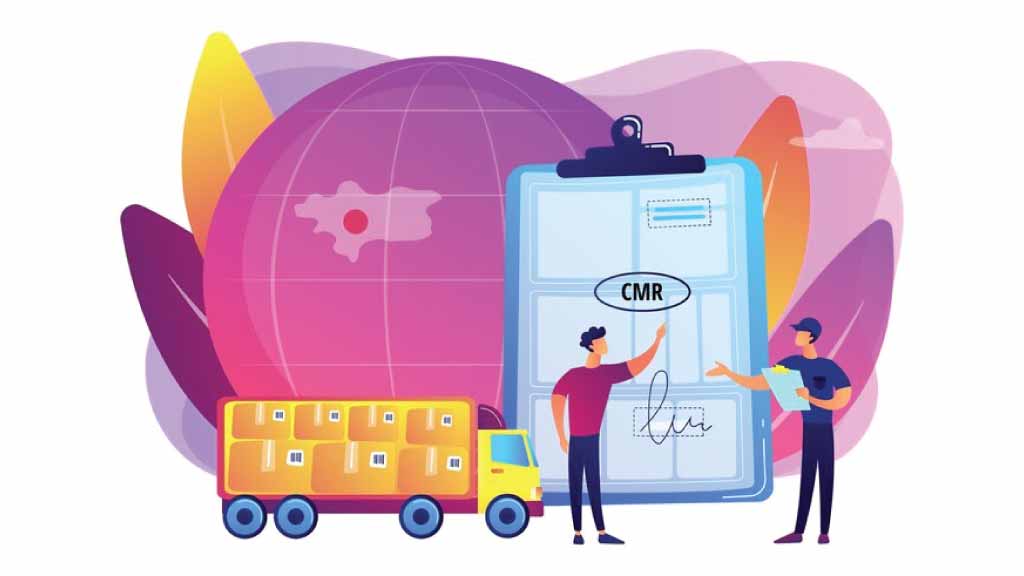In the dynamic landscape of modern business, supply chain optimization stands as a cornerstone of success. It’s not merely about moving goods from point A to point B, it’s about orchestrating a symphony of interconnected processes to deliver value seamlessly. At the heart of supply chain optimization lies the quest for efficiency, resilience, and agility. In this comprehensive guide, we delve deep into the intricacies of supply chain optimization and unveil strategies to elevate your operations to unprecedented heights.
Understanding Supply Chain Optimization
What is Supply Chain Optimization?
Supply chain optimization refers to the strategic management of all activities involved in the procurement, conversion, and logistics management of goods and services. It entails optimizing processes and resources to enhance efficiency, reduce costs, and maximize customer satisfaction. By streamlining workflows, eliminating bottlenecks, and leveraging technology, organizations can achieve a lean and agile supply chain that delivers value seamlessly from raw materials to end customers.
The Importance of Supply Chain Optimization
In today’s hyper competitive business landscape, supply chain optimization is more critical than ever. It serves as a strategic imperative for organizations seeking to gain a competitive edge and thrive in dynamic markets. Here’s why supply chain optimization is essential:
1. Enhance Efficiency
At the core of supply chain optimization lies the quest for efficiency. By optimizing processes, organizations can minimize wastage, reduce lead times, and enhance overall operational efficiency. From procurement and production to distribution and delivery, every aspect of the supply chain is fine tuned to eliminate inefficiencies and drive productivity.
2. Reduce Costs
Streamlining supply chain operations is synonymous with cost reduction. By identifying and eliminating unnecessary expenses, organizations can optimize resource allocation and minimize overheads. Whether through inventory management techniques, transportation optimization strategies, or lean manufacturing practices, supply chain optimization enables organizations to operate more cost effectively, thereby improving profitability and competitiveness.
3. Improve Customer Satisfaction
In today’s era of any instant gratification, customer satisfaction is the paramount. A well optimized supply chain ensures timely delivery of products, reduces order fulfillment errors, and enhances overall service quality. By meeting or exceeding customer expectations, organizations can foster loyalty, build brand reputation, and drive repeat business.
4. Mitigate Risks
Supply chain disruptions can have far reaching consequences, from delayed shipments to lost revenue. Supply chain optimization is instrumental in mitigating risks associated with disruptions such as natural disasters, geopolitical tensions, or economic fluctuations. By building resilience into the supply chain through redundancy, diversification, and contingency planning, organizations can weather uncertainties and maintain business continuity.
Supply chain optimization is not merely a buzzword, it’s a strategic imperative for organizations aiming to thrive in today’s fast paced business environment. By enhancing efficiency, reducing costs, improving customer satisfaction and mitigating risks, supply chain optimization enables organizations to stay ahead of the curve and achieve sustainable growth.
Strategies for Supply Chain Optimization
1. Demand Forecasting and Planning
Accurate demand forecasting is the cornerstone of effective supply chain optimization. It involves utilizing advanced analytics, machine learning algorithms, and historical data to predict demand patterns with precision. By leveraging these tools, organizations can anticipate fluctuations in demand, seasonal trends, and market dynamics, enabling proactive planning and resource allocation. This proactive approach minimizes the risk of stockouts and excess inventory, optimizing inventory levels and reducing carrying costs.
2. Inventory Management
Efficient inventory management is essential for streamlining supply chain operations. Organizations can adopt various techniques such as Just in Time (JIT) inventory, Economic Order Quantity (EOQ) models, and ABC analysis to optimize inventory levels. JIT inventory ensures that goods are received only when needed, reducing excess inventory and storage costs. EOQ models help in determining the optimal order quantity, striking a balance between ordering costs and holding costs.
Additionally, ABC analysis categorizes inventory based on value and importance, allowing organizations to prioritize resources accordingly. Implementing inventory optimization software further enhances visibility into inventory levels across the supply chain, facilitating timely replenishment and minimizing stockouts.
3. Supplier Relationship Management (SRM)
Building strong relationships with suppliers is critical for ensuring a smooth and efficient supply chain. Organizations can foster transparency, collaboration, and innovation by engaging closely with trusted suppliers. Implementing vendor management systems (VMS) enables organizations to streamline communication, track performance metrics, and manage relationships effectively.
Conducting regular performance evaluations and feedback sessions helps in identifying top performing suppliers and addressing any issues promptly. By cultivating strong supplier relationships, organizations can mitigate risks, improve product quality, and drive mutual growth.
4. Transportation and Logistics Optimization
Optimizing transportation and logistics processes is essential for reducing costs and enhancing efficiency. Organizations can leverage technology and data analytics to optimize routes, minimize empty miles, and consolidate freight. Route optimization software utilizes algorithms to identify the most efficient routes, considering factors such as distance, traffic, and fuel consumption.
Freight consolidation involves combining multiple shipments into a single container or truckload, reducing transportation costs and emissions. Embracing multi modal transportation allows organizations to leverage different modes of transportation, such as rail, road, air, and sea, based on cost and efficiency considerations. Moreover, adopting sustainable transportation practices not only reduces carbon footprint but also enhances brand reputation, contributing to long term sustainability goals.
5. Technology Integration
Embracing cutting edge technologies is key to driving innovation and efficiency in supply chain operations. Implementing supply chain management (SCM) systems provides organizations with real time visibility into inventory levels, production schedules, and order statuses. Internet of Things (IoT) devices enable organizations to track goods, monitor equipment performance, and optimize asset utilization. Blockchain technology enhances transparency and traceability across the supply chain, reducing the risk of fraud and counterfeit products.
Artificial intelligence (AI) algorithms analyze vast amounts of data to predict demand, optimize routes, and automate repetitive tasks, driving efficiency and cost savings. By integrating these technologies into their supply chain processes, organizations can gain a competitive edge, improve decision-making, and deliver value to customers more effectively.
The Future of Supply Chain Optimization

As we anticipate the future, the landscape of supply chain optimization continues to undergo rapid transformation, fueled by technological advancements, shifting consumer preferences, and global disruptions. Let’s explore the key trends that are shaping the future of supply chain optimization:
1. Digital Transformation
The digital revolution is reshaping supply chain operations, with organizations increasingly embracing cloud based platforms, big data analytics, and artificial intelligence (AI). These transformative technologies empower organizations to harness the power of data for real time insights, predictive analytics, and autonomous decision making. By leveraging digital tools, organizations can optimize processes, streamline workflows, and enhance collaboration across the supply chain network.
2. Sustainable Practices
Sustainability is emerging as a central focus area for supply chain optimization. Organizations are recognizing the importance of adopting eco friendly practices, ethical sourcing, and green logistics to minimize environmental impact and meet the growing demand for sustainable products. From reducing carbon emissions to promoting circular economy initiatives, sustainability initiatives are driving innovation and reshaping supply chain strategies for a more sustainable future.
3. Resilience and Risk Management
In an era characterized by unprecedented disruptions, building resilience into the supply chain is paramount. Organizations are investing in robust risk management strategies, scenario planning, and supply chain mapping to identify vulnerabilities and develop contingency plans. From diversifying supplier networks to reshoring manufacturing operations, resilience initiatives aim to enhance agility and ensure business continuity in the face of unforeseen challenges.
4. Supply Chain Visibility
Enhancing end to end visibility across the supply chain is critical for effective optimization. Advanced technologies such as Internet of Things (IoT) sensors, RFID tags, and blockchain enable real time tracking of goods, inventory, and shipments throughout the supply chain journey. This heightened visibility enables organizations to proactively identify bottlenecks, optimize inventory levels, and mitigate risks, thereby improving operational efficiency and customer satisfaction.
5. Agile and Adaptive Strategies
Agility is a defining characteristic of modern supply chain optimization. Organizations are embracing agile methodologies, flexible production processes, and dynamic inventory management to respond swiftly to changing market dynamics and customer demands. Agile supply chains are characterized by their ability to pivot quickly, seize opportunities, and adapt to disruptions, thereby maintaining a competitive edge in dynamic markets.
6. Collaboration and Integration
Collaboration is paramount for optimizing complex supply chains. Organizations are forging strategic partnerships, forming supply chain ecosystems, and integrating disparate systems to enhance collaboration and information sharing. By breaking down silos and fostering collaboration among stakeholders, organizations can achieve greater efficiency, transparency, and responsiveness across the supply chain network.
7. Customer Centricity
Customer centricity lies at the heart of supply chain optimization efforts. Organizations are leveraging data analytics, predictive modeling, and personalized experiences to gain insights into customer preferences and deliver tailored solutions. By aligning supply chain strategies with customer needs and expectations, organizations can enhance customer satisfaction, build brand loyalty, and drive sustainable growth in the long run.
The Role of Leadership in Supply Chain Optimization
 Effective leadership is the linchpin of successful supply chain optimization initiatives. Leaders play a pivotal role in fostering a culture of innovation, collaboration, and continuous improvement, driving their organizations towards supply chain excellence. Let’s delve deeper into how leadership can drive success in supply chain optimization:
Effective leadership is the linchpin of successful supply chain optimization initiatives. Leaders play a pivotal role in fostering a culture of innovation, collaboration, and continuous improvement, driving their organizations towards supply chain excellence. Let’s delve deeper into how leadership can drive success in supply chain optimization:
1. Vision and Strategy
Leadership sets the overarching vision and strategic direction for supply chain optimization. By articulating clear goals, objectives, and priorities, leaders align the organization towards a common purpose. They develop a comprehensive roadmap for transformation, outlining the steps needed to enhance efficiency, reduce costs, and maximize customer satisfaction. Through effective communication and engagement, leaders ensure that every member of the organization understands the importance of supply chain optimization and their role in achieving strategic objectives.
2. Change Management
Driving supply chain optimization often requires significant organizational change. Leaders must navigate resistance, foster buy in, and inspire commitment to change among employees at all levels. Effective change management involves transparent communication, active listening, and empathy towards concerns and apprehensions. Leaders create a supportive environment where employees feel empowered to embrace new ways of working.
By leading by example and demonstrating resilience, adaptability, and openness to innovation, leaders instill confidence and trust in the organization’s ability to navigate change successfully.
3. Talent Development
Building a skilled and capable workforce is essential for supply chain optimization. Leaders invest in talent development, training, and upskilling to equip employees with the knowledge and capabilities needed to thrive in a dynamic environment. They foster a culture of continuous learning and improvement, encouraging employees to explore new ideas, experiment with innovative solutions, and take calculated risks.
By recognizing and rewarding innovative thinking, leaders cultivate a culture where creativity and problem-solving flourish, driving organizational success in supply chain optimization.
4. Stakeholder Engagement
Successful supply chain optimization requires collaboration and alignment across various stakeholders, including internal teams, external partners, suppliers and customers. Leaders play a pivotal role in facilitating stakeholder engagement, fostering strong relationships built on trust, transparency, and mutual respect. By actively involving stakeholders in decision making processes, leaders ensure that diverse perspectives are considered, and consensus is reached.
Effective stakeholder engagement enables seamless coordination, communication, and alignment of interests, driving collective efforts towards supply chain optimization goals.
5. Performance Measurement and Accountability
Leadership establishes clear performance metrics, key performance indicators (KPIs), and benchmarks to assess the effectiveness of supply chain optimization efforts. They track progress, analyze performance data, and identify areas for improvement. By holding teams accountable for results and celebrating successes, leaders reinforce a culture of accountability and continuous improvement.
Regular performance reviews and feedback sessions provide valuable insights for identifying strengths, addressing weaknesses, and optimizing processes for better outcomes.
6. Innovation and Risk Taking
Leadership fosters a culture of innovation and risk taking within the organization, encouraging employees to challenge the status quo and explore new opportunities for improvement. They create a safe environment where ideas are welcomed, and experimentation is encouraged. By empowering teams to take calculated risks and learn from failures, leaders foster creativity, agility, and resilience in the pursuit of supply chain optimization goals.
Embracing innovation and risk taking enables organizations to stay ahead of the curve, seize opportunities, and drive continuous improvement in supply chain operations.
7. Resilience and Adaptability
In a rapidly changing business environment characterized by volatility, uncertainty, complexity, and ambiguity (VUCA), resilience and adaptability are essential qualities of effective leadership. Leaders anticipate potential disruptions, proactively identify risks, and develop contingency plans to ensure business continuity. They lead by example, remaining calm, decisive, and flexible in the face of adversity, inspiring confidence and trust in their teams. By fostering a culture of resilience and adaptability, leaders prepare their organizations to navigate challenges effectively and emerge stronger from adversity.
In summary, effective leadership is indispensable for driving supply chain optimization initiatives and achieving sustainable success. By setting a clear vision, fostering a culture of innovation and collaboration, developing talent, engaging stakeholders, measuring performance, and demonstrating resilience, adaptability, and openness to change, leaders can propel their organizations towards supply chain excellence.
 Conclusion: Lead the Way to Supply Chain Excellence
Conclusion: Lead the Way to Supply Chain Excellence
In conclusion, leadership emerges as the cornerstone in the journey towards supply chain optimization and sustainable success. With a visionary approach, leaders set the trajectory for organizational transformation, guiding teams towards common objectives and strategic goals. By spearheading change initiatives, nurturing talent, and fostering collaboration, leaders create an environment conducive to innovation and continuous improvement. Effective engagement with stakeholders ensures alignment of interests and fosters a culture of transparency and trust.
Through diligent performance measurement and accountability, leaders steer the course towards operational excellence and superior outcomes. Embracing resilience in the face of challenges, leaders inspire confidence and adaptability, driving sustained growth and competitive advantage. Thus, leadership stands as the driving force behind supply chain excellence, paving the way for a future characterized by unparalleled success and achievement.
FAQs:
What are the main benefits of supply chain optimization?
Supply chain optimization offers several key benefits, including improved efficiency, reduced costs, enhanced customer satisfaction, and greater resilience to disruptions. By streamlining processes, optimizing inventory levels, and leveraging technology, organizations can achieve operational excellence and gain a competitive edge in the market.
How does supply chain optimization contribute to cost reduction?
Supply chain optimization helps organizations identify inefficiencies and cost saving opportunities across the supply chain. By implementing strategies such as inventory management techniques, transportation optimization, and supplier consolidation, organizations can minimize wastage, reduce overheads, and optimize resource allocation, resulting in significant cost savings.
What role does technology play in supply chain optimization?
Technology plays a crucial role in supply chain optimization by enabling real time visibility, data analytics, and automation. Advanced technologies such as IoT sensors, RFID tags, blockchain, and AI algorithms provide valuable insights into supply chain operations, allowing organizations to make informed decisions, streamline workflows, and improve efficiency.
How can organizations foster collaboration for supply chain optimization?
Effective collaboration among internal teams, external partners, suppliers, and customers is essential for supply chain optimization. Organizations can foster collaboration by establishing clear communication channels, sharing information transparently, and aligning goals and objectives. By working together towards common objectives, stakeholders can leverage collective expertise and resources to drive continuous improvement in supply chain operations.
What are some challenges organizations may face in supply chain optimization?
While supply chain optimization offers numerous benefits, organizations may encounter challenges such as resistance to change, data silos, technology integration issues, and supply chain disruptions. Overcoming these challenges requires strong leadership, strategic planning, and a proactive approach to change management and risk mitigation. By addressing these challenges effectively, organizations can unlock the full potential of their supply chains and achieve sustainable success.
All Images ‘Designed by Freepik‘



 Conclusion: Lead the Way to Supply Chain Excellence
Conclusion: Lead the Way to Supply Chain Excellence